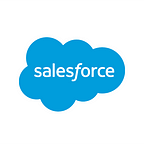Spring-Clean Your Email Marketing Strategy with These 5 Tips
By Heike Young
Ah, email. Commonplace and often neglected, yet so effective for marketers.
Using email effectively in your marketing strategy can increase conversions, keep your brand top of mind, and even surprise and delight your customers (instead of annoying them).
On this week’s episode of the Marketing Cloudcast — the marketing podcast from Salesforce — we are chatting with one of the country’s foremost experts on email marketing: David DeVore.
David is the founder and CEO of StoryPorts, and he’s serious about helping companies use email in a more productive and interactive way. At StoryPorts, David has worked with some of the world’s largest companies on their email marketing strategies. Of course, he’s a huge fan of email in concert with your marketing strategy, and we had a great chat with him on the show about how to up-level your email game.
If you’re not yet a subscriber, check out the Marketing Cloudcast on iTunes, Google Play Music, or Stitcher.
Take a listen here:
You should subscribe for the full episode this entertaining email savant, but here are a few takeaways from our conversation with David to help you organize and spring-clean your email marketing strategy.
1. Build a message that taps into emotions.
Think about the latest time you scrolled through promotional emails in your inbox. Sometimes, a subject line will catch your eye, while other times, it seems like there’s nothing worth clicking on. What are marketers in the first group doing right?
David believes that most marketing emails just aren’t interesting or highly graphic enough — and they don’t speak to the audience on an emotional level. He explains that marketers can do more than just sell: “We can build a message that is emotional.”
2. Don’t overwhelm your audience.
David also thinks many emails are overloading customers with too many options or paths. You might want to try putting four CTAs in one email to see what sticks, but limiting your CTAs is actually preferable, in David’s experience. Consumers become easily overwhelmed if they see too many things going on and they’ll likely click away. Instead, choose one action that your email should center on, focus on that, and build on it through every email element.
“It’s easy to try and jam every piece of content that you have into one email. The reality is that people make split-second decisions in terms of whether they pay attention to your email or not,” he advises.
Once someone has subscribed to your emails, they are at the highest level of being interested in what you offer. But that’s where your consumer’s interest starts waning, and that’s why you need to find a way to hold their attention. As David says, “We need to train people to pay attention.”
3. Create an interactive experience.
David is excited about what the future holds for interactive emails. Email standards are increasing, and marketers are beginning to push the envelope in how they keep audiences engaged.
David advises using a welcome series that contains infographics. “We can start playing with interactivity inside of email. You have videos that play in an email, drawers that can be opened and shut, or sliders to open and close. I tend to think that that is the next frontier. That’s what we’ll see over the next five years.”
He goes on to describe his prediction for interactive consumer experience. “Our emails will become highly interactive in that people can touch and play with and get more out of it.”
4. Use data to make it personal.
According to David, Spotify is a great example of a company that personalizes email to great effect. “They did an end-of-year email compiled per individual. It was basically like — here are your stats for the year, here’s your top-played artist. That was a really fantastically executed campaign.”
These emails from Spotify have become beloved by customers — so much so that some subscribers filed support tickets with the company when their email didn’t come through! It’s pretty amazing to think about customers being so distraught over missing a brand’s email.
David stresses the importance of using all of the data you have on subscribers and getting creative on how you use it. He explains, “When a brand can get to a place where they can really think of your data and serve up content that is interesting and not creepy, then that’s a win.”
5. Let quality determine frequency.
How often can you send an email before it becomes annoying? David tends to think that the more often you can send a good email, the better. If your content is good enough, you can get away with sending a daily email. But are most brands’ content good enough to warrant a daily send?
He shares, “There tends to be a correlation between frequency and the quality of content. If you can up your game in terms of the quality of content, then you can also up your game in terms of the frequency. If your content it not that good, then you can only get away with sending a monthly or weekly newsletter.”
So, there you have it. Five amazing tips from David DeVore to get you started on refining your email strategy so you can effectively get and keep your audience engaged.
Join the thousands of smart marketers who already subscribe to the Cloudcast on iTunes, Google Play Music, and Stitcher.
New to podcast subscriptions in iTunes? Search for “Marketing Cloudcast” in the iTunes Store and hit Subscribe, as shown below.
Tweet @youngheike with marketing questions or topics you’d like to see covered next on the Marketing Cloudcast.
Originally published at www.salesforce.com.
